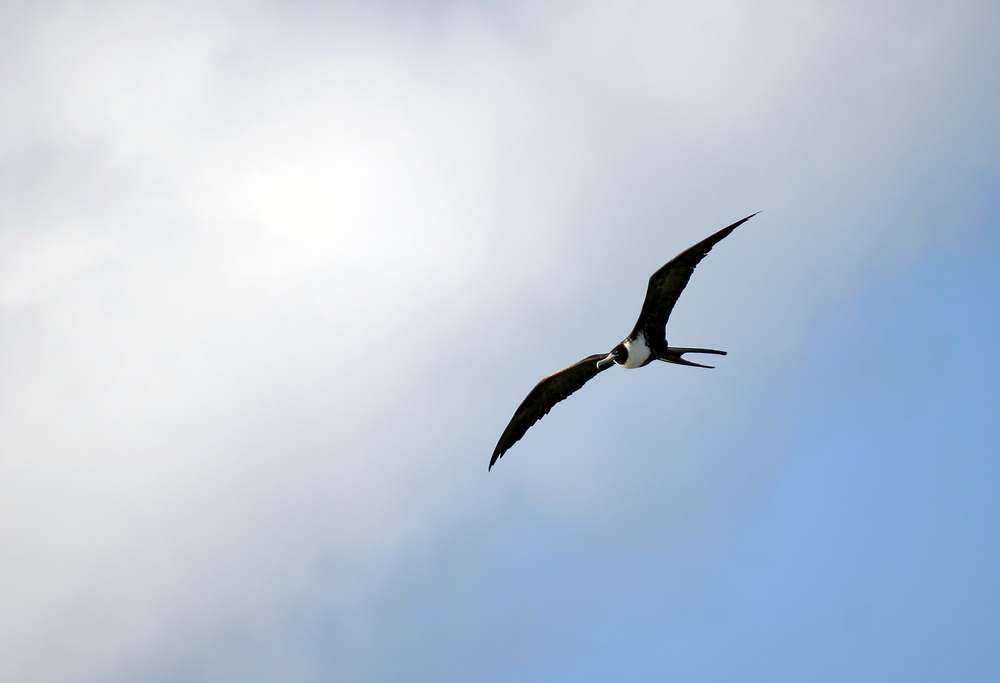 shutterstock
shutterstock
Great frigatebirds seem to defy the rules of gravity and, now, they are redefining basic physiology. Their enormous wingspan (7-8 feet) and ability to ride air currents allow them to travel long trips - staying in the air for almost two months - without stopping. When in flight, the birds can travel 40 miles without so much as a wing-flap and can cover more than 300 miles in one day. They usually keep to an altitude of 30 to 2,000 meters, but have been found as high as 4,000 meters (~2.5 miles). They even fly straight into clouds. Until now, scientists have wondered how they sleep during these long trips. A recent study has provided an answer... they sleep while flying which ornithologists refer to as "on the wing." Researchers from the Max Plank Institute for Ornithology and the University of Zurich recorded the brain activity (by electroencephalogram (EEG)) of frigatebirds in flight. They attached a recording instrument, which is a modification of an older device that was originally designed to study homing pigeons, to the heads of 14 female great frigatebirds. The birds' movements and altitude were recorded via GPS. All 14 birds took flights over the ocean that lasted up to 10 days and covered roughly 1800 miles. Their routes are shown below, each bird represented by a different colored line.
The results from the EEG show that the birds sleep one hemisphere of the brain at a time, while in flight. The state of having one hemisphere asleep at a time is known as unihemispheric slow wave sleep (USWS) and is known to be employed by both dolphins and birds on land. Even more surprising is the finding that they are able to sleep both hemispheres of the brain simultaneously.
Almost all of the on the wing sleeping was done at night. This makes sense as frigatebirds need to catch fish during the day. Their state of awakeness began to shift towards sleep within the hour after sunset and returned in the hour before sunrise. During a nighttime flight without wing flapping, the EEG showed a change to slow wave sleep, with an accompanying change in the angle of the bill, perhaps representing the pulling up of the head into the body - the normal sleeping position of frigatebirds. Occasionally, REM sleep was also recorded which can only occur during bihemispheric sleep. Although the frigatebirds do sleep in flight, they save most of their sleep time for when they are on land. They slept for only about 3 percent of the time spent in flight as compared to about 53 percent of their time spent on land. Additionally, frigatebirds sleep primarily when they are circling in air currents. They sleep less, in shorter stretches and less deeply, overall, on the wing than while resting on land. This fascinating discovery redefines what we know about sleep and opens up many interesting questions about the sleep habits of other animals. The great frigatebirds give us many reasons to be in awe of their abilities - now we can add sleeping while in flight to the growing list. References: Rattenborg, N. C., et al (2016). Evidence that birds sleep mid-flight. Nature Commun., DOI: 10.1038/ncomms12468 [Full text]

